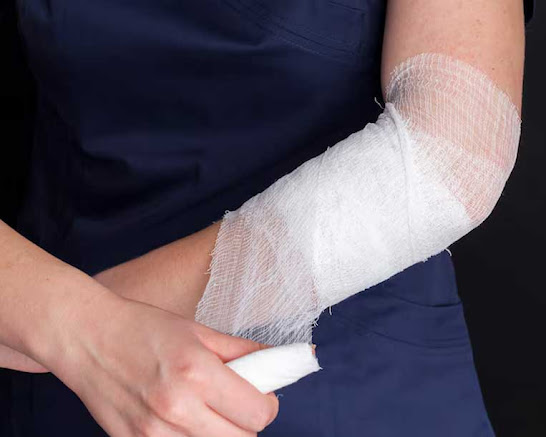The main
reason people experience some pain in their feet is plantar fasciitis, which
affects both the heel and arch regions. The Heel
Pain frequently prevents you from aggressing your heels despite
your lack of physical contact with them. Severe heel pain occurs post-exercise,
but regular dullness develops after the initial phase. Many people report that
the first few steps out of bed are the worst, and early in the morning is
typically when the pain is at its worst.
Plantar Fasciitis Surgery is one
of many possible treatment options for this dangerous condition. Surgery, of
course, is never the first course of action.
Keeping all
of this in Mind, here are Some Essential Facts Regarding Plantar Fasciitis:
• Why does
it occur?
• How could
you tell?
• Which home
and lifestyle therapies are available for you to try?
• What if
your only option is surgery?
Start by
examining these questions while remembering everything we have discussed
together.
Understand the Reasons Behind Plantar
Fasciitis Development?
The plantar
fascia functions as a critical Ankle-Foot
structure since it functions as a tissue band extending from your heels to your
toe base. Walking protection rests on the plantar fascia, but this bandage
offers no protection against wear and tear. Pain can result from pushing it too
far. As we stated in the introduction, the discomfort is at its worst in the
morning and immediately following physical activity.
Jogging,
running, walking, standing for extended periods, and just being on your feet
can all cause plantar fasciitis. Once the damage appears, ignoring it will only
make the situation worse. The situation will rapidly worsen, and soon, surgery
for plantar fasciitis will be your only alternative if you don't at least try
to get some rest or address the issue at home.
How can you Prevent Surgery for Plantar
Fasciitis?
Despite the
high success rate of this operation, most patients first seek relief from their
problems on their own after speaking with their orthopedist. Here are a few
techniques you should experiment with.
For example,
it's a terrific idea to:
• Try to
chill a sore spot; the easiest way to do this is with an ice pack wrapped in a
towel.
• Make use
of heel cushions in your shoes.
• Take a
short break and rest your foot.
• Attempt some
simple foot stretches:
• Put the
foot up on the stool.
• Include
stretching for your calf muscles in your routine.
If none of
this works, you may want to think about taking some over-the-counter medicine.
Given how they may impact the healing process, it is now recommended to avoid
taking anti-inflammatory drugs for the first two days following an accident.
Painkillers may also cause you to push the afflicted foot past its breaking
point, which is already a setback and raises the risk that you will require
surgery for plantar fasciitis.
Plantar Fasciitis Treatment Available are:
Surgery for Plantar Fasciitis Release
Cutting your
plantar fascia is one way to relieve the pressure that has accumulated. These
days, it can be done openly or endoscopically, depending on the location and
the person performing it. A surgeon performs an endoscopic plantar fasciotomy
by making two tiny incisions on either side of the heel's sole. They then
operate through these (often) half-inch-long incisions while inserting a tiny
camera and equipment.
In open
surgery, the plantar fascia is released by a surgeon making a little incision,
typically no larger than 1-2 inches. They may release a trapped nerve and
remove a bone spur if they come across one.
People
heavily debate about how much pain accompanies plantar fasciitis surgical
procedures. All surgical treatments allow patients to receive medication either
through local anesthesia or general anesthesia before the operation starts.
Both are quite successful. Endoscopic surgery is more attractive to numerous
individuals because of its minimal invasiveness.
Why are you a Good Fit for this Procedure?
Now, you are
not necessarily a candidate for surgery just because you think you have a
plantar fascia issue. To be considered such, you must:
• Experience
these symptoms for a minimum of six months.
• Pain is
actively disrupting your job.
• Be
incapable of engaging in physical activity.
Despite
trying several pain management techniques, you are still in pain.
Certain
conditions alongside surgery for plantar fasciitis create risks that may
produce issues and potentially delay recovery, although proper sedation
minimizes these factors. Such factors notably affect endoscopic procedures, but
the following conditions remain most frequent:
• Diabetes
•
Insufficiency of veins
• Neuropathy
in the periphery: Your doctor will decide on treatment methods by examining all
essential factors.
What is the Recovery Time from the Surgery?
Patients
undergoing different forms of surgery might experience unique recovery time.
After standard plantar fasciitis release surgery, patients require a recovery
time of 3 to 6 weeks when choosing endoscopic surgery, while open surgery needs
recovery from 6 to 10 weeks. Post-surgery recovery is promoted through physical
therapy as physicians recommend this treatment to you.
Conclusion
The
experience of needless pain should never require your treatment. Anyone who
undergoes the procedure can be reassured by its safety and minimal pain experienced
during the procedure. Irrespective of other treatment options, patients recover
quickly when discomfort persists. Getting advice about Plantar Fasciitis Surgery
from qualified professionals remains the most beneficial step.


.jpeg)








